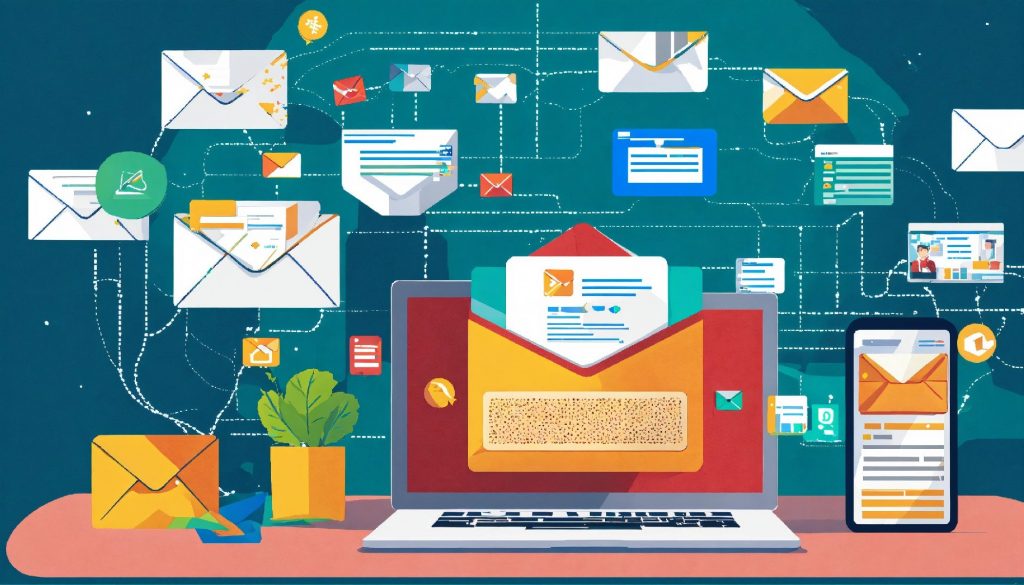In the dynamic landscape of online entrepreneurship, affiliate marketing has emerged as a powerful and low-risk way for individuals to monetize their digital presence. 🌍 Whether you’re dreaming of ditching your 9-to-5 or just want a smart side income, affiliate marketing offers a flexible path that can scale with you. 🙌
This post breaks down the essential steps and strategies you need to transform your affiliate hustle into a full-blown business. From choosing your niche and building your brand to scaling, automating, and staying competitive, this guide will help you build a profitable, sustainable affiliate business that grows with you. Let’s dive in! 💡
1. Introduction to Affiliate Marketing 🎯
💡 What is Affiliate Marketing?
Affiliate marketing is like being the ultimate online matchmaker. 💘 You connect people with products or services they already want — and you earn a commission every time they make a purchase through your referral. 🛒 It’s a win-win-win!
🌟 The Benefits of Affiliate Marketing
- Work from anywhere 🌍
- No product creation required 💼
- Low startup costs 💸
- Earn while you sleep 😴
- Be your own boss 💪
2. Building a Solid Foundation for Your Side Hustle 🧱
🍕 Choosing a Profitable Niche
Pick a niche like you’d pick your favorite slice of pizza — make sure it’s something you love and that others are hungry for too. Focus on value, demand, and interest.
🏪 Creating a Professional Online Presence

Your website is your digital storefront. Make it clean, attractive, and trustworthy. This is where you’ll showcase your expertise, build authority, and start making those affiliate commissions roll in.
🧠 Understanding Your Target Audience
Know your audience like your best friend. What are their biggest problems, goals, or daily struggles? The better you understand them, the better you can serve them — and sell to them.
3. Strategies for Growing Your Affiliate Marketing Business 🌱
✍️ Content Creation and SEO Optimization
Content is king — but SEO is the key to the kingdom. 👑 Create helpful, keyword-rich content that ranks well in search engines and naturally includes affiliate links your audience actually wants to click.
📱 Social Media Marketing and Engagement
Social media is your personal stage. 🎤 Be real, be relatable, and don’t just sell. Build trust by showing up consistently, sharing tips, and connecting on a human level.
📧 Building an Email List and Nurturing Relationships
Email = relationship gold. 💌 Build your list early and treat your subscribers like VIPs. Share helpful tips, exclusive content, and occasional offers they’ll thank you for.
4. Scaling Up: Transitioning to Full-Time Income 📈
🎯 Setting Clear Goals and Milestones
Don’t just hustle blindly. Set SMART goals — Specific, Measurable, Achievable, Relevant, and Time-bound — to track your growth and stay motivated.
🔥 Increasing Traffic and Conversions
You want qualified traffic — people ready to click and buy. Focus on organic SEO, targeted social content, and conversion optimization (like better CTAs and faster pages).
💸 Monetization Strategies for Growth
Want to really scale?
- Launch digital products 🛠️
- Offer exclusive memberships 🗝️
- Collaborate on sponsored content 🤝
- Sell higher-ticket affiliate offers 💵
5. Maximizing Revenue Streams and Diversifying Partnerships 💡
🧺 Exploring Different Affiliate Programs and Networks
Don’t keep all your commissions in one basket! 🧃 Test various affiliate networks and programs to find the best commissions, highest conversions, and most relevant offers for your audience.
💰 Creating Multiple Income Streams
The more streams, the better. Supplement affiliate sales with ad revenue, sponsored posts, or your own products. It’s all about stability and scalability.
🤝 Establishing Long-Term Partnerships
Strong, long-term affiliate relationships = predictable income + exclusive deals. Treat your affiliate managers like business partners, and they’ll look out for you too.
6. Leveraging Automation and Tools for Efficiency 🛠️
⚙️ Utilizing Affiliate Marketing Tools and Software

Use tools like:
- Link shorteners (Pretty Links, ThirstyAffiliates)
- Analytics platforms (Google Analytics, Fathom)
- SEO software (Ahrefs, Surfer, Ubersuggest)
These tools save you time, track results, and help you optimize.
🤖 Implementing Marketing Automation for Scalability
Let email sequences, autoresponders, and social schedulers handle the grunt work. Set it up once, and let the systems run your biz while you focus on growth.
📊 Tracking and Analyzing Performance Data
Numbers don’t lie. Monitor clicks, conversion rates, and income to find your top-performing content and adjust what’s not working.
💼 Affiliate Disclaimer: This post contains affiliate links, which means I may earn a commission if you click and purchase — at no extra cost to you. I only recommend tools and products I personally use and trust. Your support helps keep this content free and flowing! 🙌
7. Overcoming Challenges and Staying Competitive 🥊
⚠️ Adapting to Algorithm Changes and Market Trends
Whether it’s Google updates or social platform shifts, stay informed and ready to pivot your strategy fast.
🧩 Managing Competition and Standing Out
Your voice, your story, and your experience are what set you apart. Focus on authenticity and value, not just selling.
🛑 Dealing with Affiliate Marketing Challenges
From rejected applications to fluctuating commissions, challenges happen. Stay resilient, keep learning, and always have a backup plan.
8. Planning for Long-Term Success and Sustainability 🌱
🧱 Creating a Sustainable Business Model
Don’t just chase trends. Build systems and assets (like evergreen content or funnels) that work for you long-term.
📰 Staying Updated on Industry Developments
Follow top affiliate blogs, podcasts, and newsletters. Stay in the loop so you’re not caught off guard by changes.
📚 Investing in Continuous Learning and Growth
Take courses. Attend webinars. Join communities. Growth = more knowledge, better results, and a more fulfilling journey.
Final Thoughts 💭
Affiliate marketing isn’t just a side hustle — it’s a real, scalable business. With strategy, patience, and the right mindset, you can go from making a few bucks a month to building a full-time income (and beyond). 💼💥
Stay consistent, focus on value, and always keep learning. The road may have bumps, but the destination is totally worth it. Here’s to your continued growth and success in affiliate marketing! 🥂🎉
🔍 FAQ
1. How long does it typically take to transition from a side hustle to a full-time income in affiliate marketing?
It varies! Some marketers see results in 6–12 months, while others may take 1–2 years. It depends on your niche, traffic, strategy, and consistency. 🎯
2. Is it necessary to have a large following or website traffic to succeed in affiliate marketing?
Not at all! A small, engaged audience can convert better than a large but passive one. Focus on quality over quantity. 👥
3. What are some common challenges that affiliate marketers face when scaling up their business?
Common hurdles include traffic plateaus, declining commission rates, algorithm changes, and burnout. All can be overcome with smart systems and adaptability. 🛠️
4. How can I ensure the sustainability of my affiliate marketing business in the long run?
Diversify your income, automate where possible, stay current on trends, and build genuine relationships with your audience and partners. Longevity comes from value and strategy. 📈















